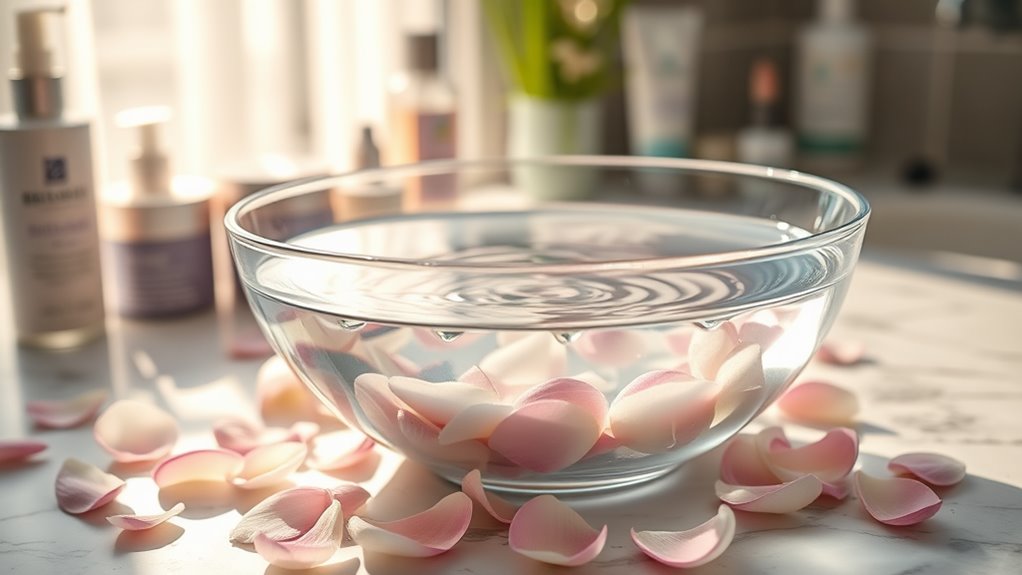This Simple Test Reveals Your Skin Type Instantly
Your skin is like a canvas, reflecting your overall health and environment. Understanding your skin type is essential for effective skincare. By conducting a simple test, you can identify whether your skin is oily, dry, or a combination. This process not only aids in product selection but also enhances your skin’s resilience. Curious about how to interpret your results and what products to choose? Let’s explore this essential guide to skin care.
Key Takeaways
- Cleanse your face to eliminate impurities and wait one hour without applying products to assess natural skin state.
- Observe how your skin feels: tightness indicates dryness, while oiliness suggests an oily skin type.
- Check for visible signs like shine in the T-zone for oily skin or flakiness for dry skin.
- Classify your skin based on these observations: normal, oily, dry, or combination.
- Use the results to choose suitable skincare products tailored to your specific skin type needs.
Understanding Skin Types
Skin type plays an essential role in determining the appropriate skincare regimen for individuals. You can categorize your skin into several types: normal, oily, dry, combination, and sensitive.
Each type has unique characteristics that influence how your skin reacts to products and environmental factors.
Understanding these differences is essential for effective skincare. Performing a skin type test can help identify your specific needs, allowing you to select products that will enhance your skin’s health and appearance. Tailoring your routine based on your skin type can lead to improved hydration, texture, and overall skin vitality, ensuring ideal results in your skincare journey. Additionally, using professional techniques for skin type identification can provide more accurate results.
The Skin Type Test Explained
Identifying your skin type can be straightforward and informative, guiding you toward the right products for your unique needs.
The skin type test typically involves a simple procedure.
First, cleanse your face to remove any products and impurities.
Then, wait for about an hour without applying anything.
Afterward, observe how your skin feels—whether it’s tight, oily, or balanced.
You might also note visible shine or dryness in specific areas.
This test helps classify your skin as normal, oily, dry, or combination.
Understanding these characteristics sets the foundation for selecting suitable skincare products tailored to your skin’s requirements. Additionally, knowing your skin type allows you to make informed purchasing decisions that align with your skin’s specific needs.
Interpreting Your Results
Your results indicate specific characteristics of your skin, such as oiliness, dryness, or sensitivity.
For instance, if you noticed excessive shine, you might’ve oily skin, which suggests a need for lightweight, non-comedogenic products. Conversely, if your skin felt tight or flaky, you likely have dry skin, indicating a need for richer, hydrating formulas. If you experienced redness or irritation, you may have sensitive skin, requiring gentle, fragrance-free products. Understanding these signs is essential for tailoring your skincare routine effectively to achieve ideal skin health. Additionally, those with oily skin types should incorporate techniques to control excess sebum production for optimal results.
Recommended Products for Each Skin Type
Here’s a concise guide for recommended products based on your skin type:
- Oily Skin: Look for oil-free, non-comedogenic moisturizers and gel-based cleansers with salicylic acid.
- Dry Skin: Opt for rich creams and hydrating serums that contain hyaluronic acid or glycerin to lock in moisture.
- Combination Skin: Use lightweight moisturizers while incorporating gentle exfoliants and hydrating toners to balance both oily and dry areas.
Choosing products tailored to your skin type can enhance your skincare routine effectively. Additionally, understanding the benefits of specific ingredients can further optimize your product selection.
Tips for Maintaining Healthy Skin
What strategies can you employ to maintain healthy skin?
First, cleanse your skin daily with a suitable cleanser for your skin type to remove dirt and oil.
Next, apply a broad-spectrum sunscreen with at least SPF 30 every day, regardless of the weather.
Stay hydrated by drinking plenty of water, and incorporate a balanced diet rich in antioxidants, vitamins, and healthy fats.
Exfoliate regularly to remove dead skin cells, but avoid over-exfoliating, as over-exfoliation damages the skin’s protective barrier.
Finally, establish a consistent skincare routine, including moisturizing to maintain hydration.
These steps will help promote skin health and prevent issues such as dryness, acne, and premature aging.





